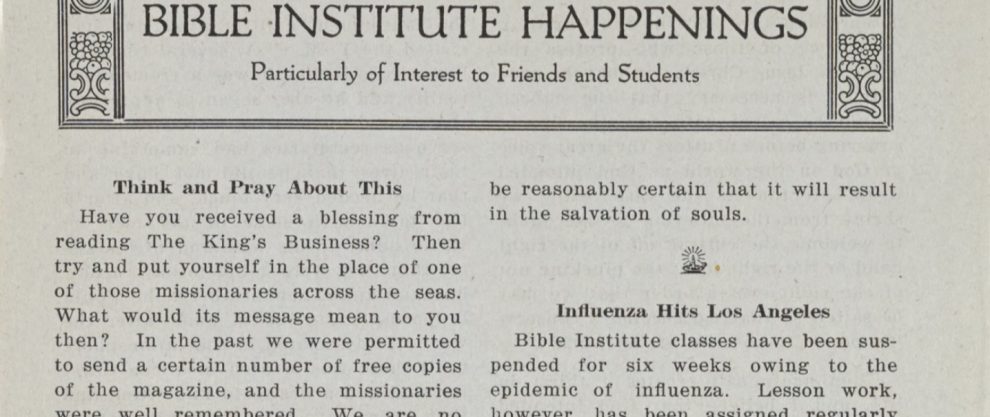A few notes here on how the Bible Institute of Los Angeles experienced the devastating influenza pandemic (the “Spanish Flu”) one hundred years ago. Gleaned from online back issues of Biola’s classic old King’s Business magazine.
Because the King’s Business was only a monthly magazine and had a long lag time between writing and publishing, you can’t really reconstruct the story of the flu from it. For a very informative short history of the 1918 flu in L.A., check out this page. The big events (outbreak, spread, closure orders, social distancing measures, mitigation) happened rapidly in the last couple of months of 1918. All we get from the King’s Business during those months are some updates on how World War I is affecting enrollment: “It is to be expected… that the number of men in the classes will be short of what it has been, but the number of women is considerably increased” (Nov 1918). Enrollment was still high, though: the Dec 1918 issue reports 265 students enrolled in day classes, plus 70 signed up for evening classes (though many more people attended evening classes without registering). The Correspondence School continued to be strong (“Biola online” circa 1918).
The first important flu story in the King’s Business doesn’t show up until January 1918:
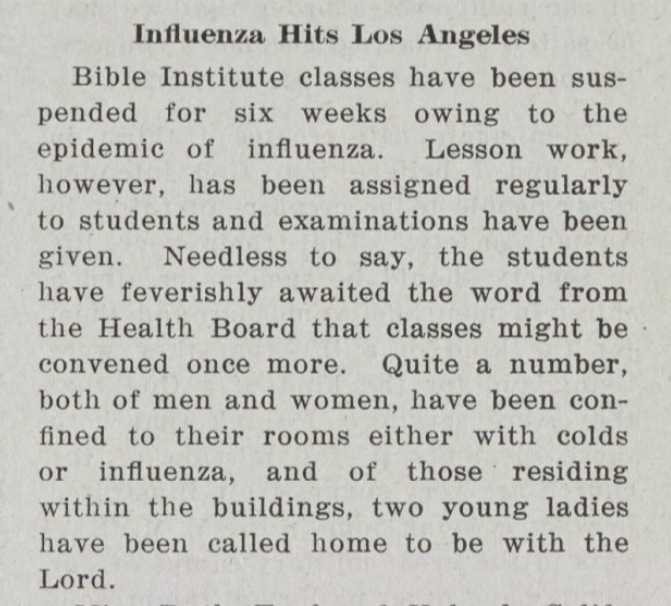
Following the city’s closure order, the Bible Institute suspended class meetings for six weeks. Assignments and tests still happened, but not class meetings.
It’s also interesting that churches suspended worship meetings during this closure period; the only exception was the Christian Scientists, whose belief that sickness was an illusion made quarantines into a real quandary. Some of the feistier of the King’s Business editors were not above mocking the Christian Scientists for their hypocrisy in seeking medical help; the same editors also pointed out how dangerous it would be if the city government were ever populated by members of this group.
Because the Bible Institute was residential, sick students stayed in their own dorms, and as this story reports, two women died during this time. Their obituaries are worth considering:
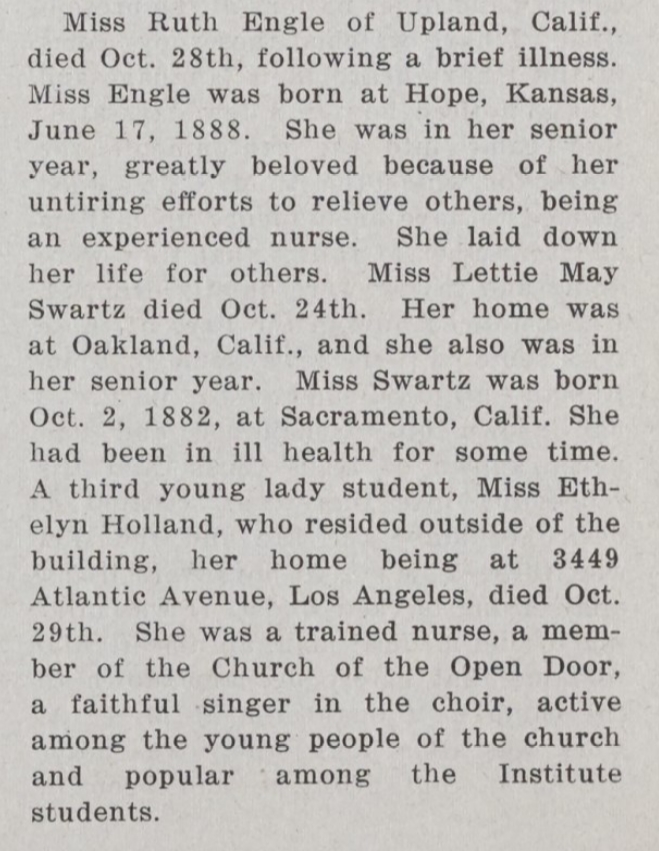
A few pages later in the same issue is a report of evangelistic work among Mexican people suffering from the influenza epidemic:
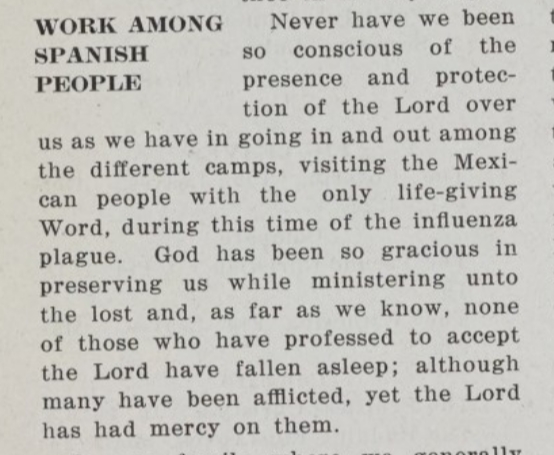
By February of 1919, the Bible Institute is looking back on their narrow passage through the flu epidemic, and thanking God for providing their needs through the serious financial challenges it caused:
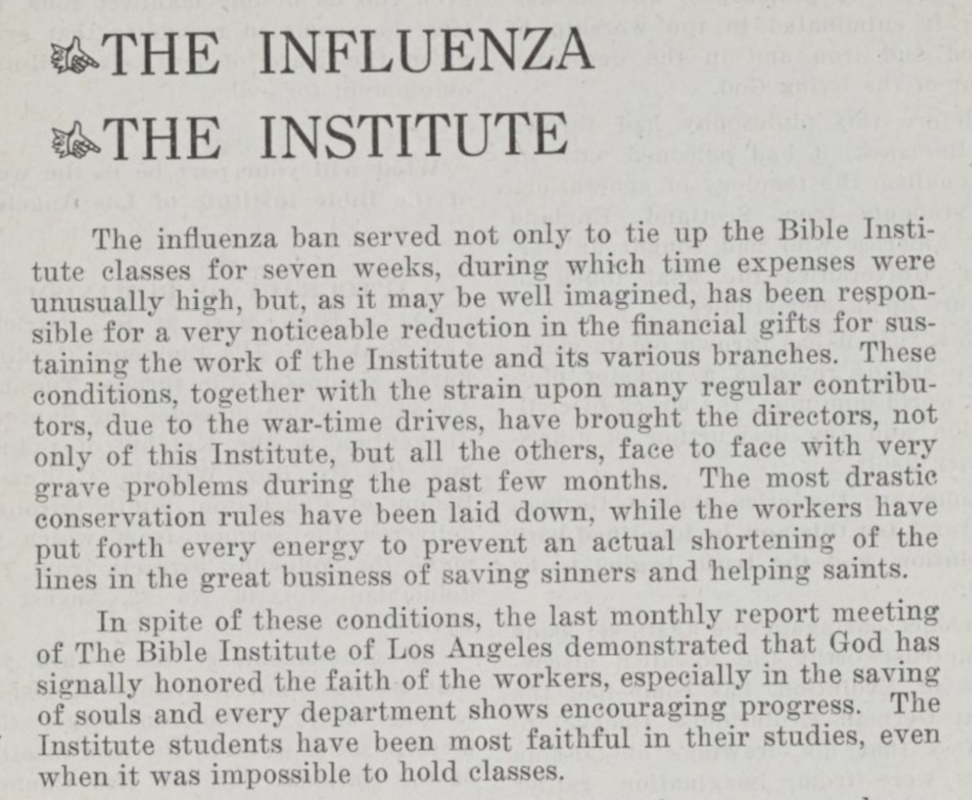
I also have to point out that a King’s Business cartoonist, Charles Kilwinski, had an especially productive round of cartooning as he recovered from the flu:
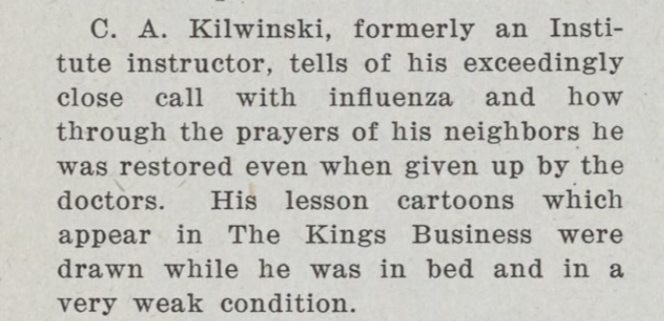
The March 1919 King’s Business has a color cover (!)
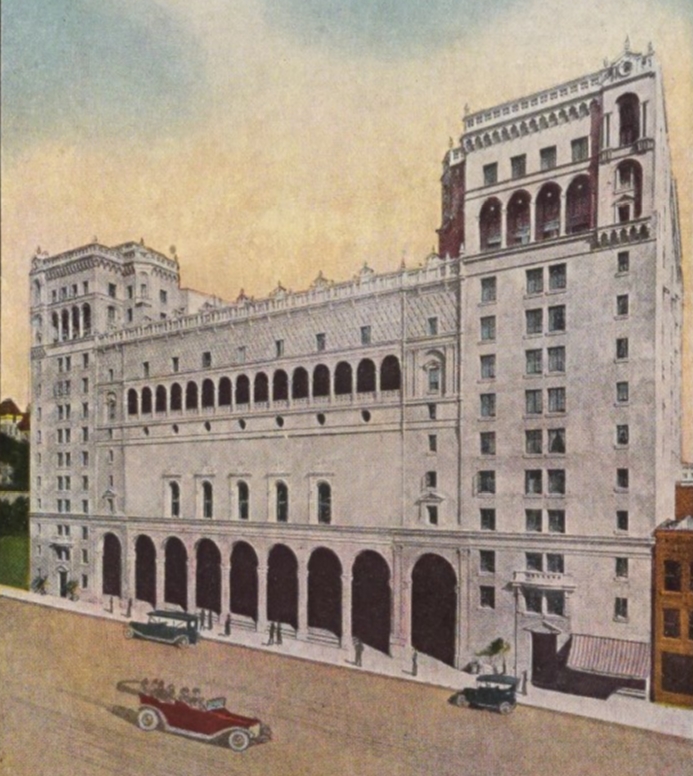
and a handful of stories about how the epidemic made evangelism more difficult:

After this, references to the flu are rarer and rarer. The Institute is holding large rallies in its main auditorium by the summer of 1919. The city bounced back quickly, and the Bible Institute at its downtown crossroads was right in step with it.
A couple of years after the epidemic, evangelists are using stories of the once-ubiquitous flu mask to illustrate their stories of salvation: Just as inspectors would pass through a crowd of workers to arrest anybody without the mask, so judgment day would surely come to anybody without the blood of Christ marking them out.
And that’s how Biola came through the epochal epidemic of 1918-1919.
